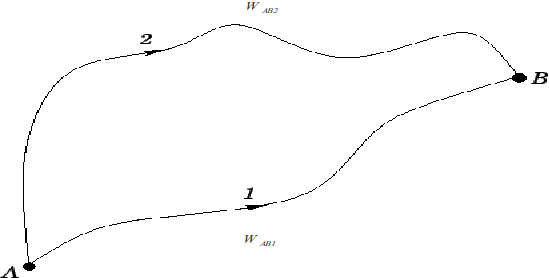Potential energy is like a 'store' of energy. Throw a ball into the air, and kinetic energy is converted into potential energy which is changed back into kinetic energy as the ball falls back down. If there is no air resistance, all the kinetic energy is retrieved.
In the same way, a glider moving on a frictionless track hitting a spring has kinetic energy changing into potential energy stored in the spring. The spring is compressed. Eventually the kinetic energy is reduced to zero, and when the spring starts to expand again, potential energy is changed back into kinetic energy. If there is no friction either between glider and track or internal energy in the spring, Then all the kinetic energy is recovered.
In both these cases the sum of kinetic energy plus potential energy is conserved. A force that offers this sort of energ store to enable the exchange of potential and kinstic energy is called a conservative force.
The essential features of conservative forces are:
-
A body may move between two points by various paths but the work done in moving from point to point is independent of the path taken:
 below.
below.

-
The potential energy of a particle depends only on it's position and not on it's velocity or acceleration.
-
When the start and end points are the same the total work done is zero.
-
The work done by conservative forces can always be expressed as the difference between the initial and final values of a potential energy function.
-
Friction and air resistance are not conservative forces. Work must be done to overcome friction and air resistance and potential energy does not increase as a result of overcoming friction and air resistance. Instead, in these cases, heat is generated, which cannot be later used to do work.
